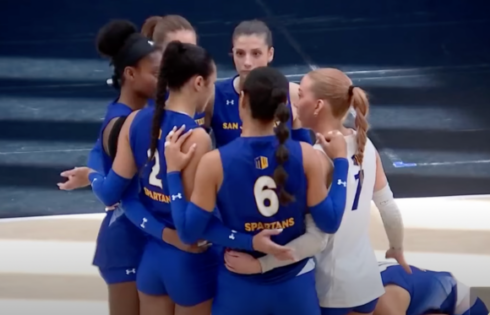
Bruce Gans at The Pope Center has some issues with the “sacrosanct pedagogical principle” that group work is essential for learning:
The tragedy of classroom group work is it is a waste of a unique and precious classroom opportunity for students who, for perhaps the only time in their lives, are learning how to do their own thinking and intellectual work, uncontaminated by group conformity and pressure to knuckle under or remain silent.
Students are best served when professors use class time to teach them to think through a problem independently. There is a dignity that follows from learning to formulate one’s own analysis with uncompromised autonomy. That is in complete contradiction to the goals of small group work.
Small group learning accomplishes little beyond giving faculty time off from the hard work of instructing, lowering their essay grading load. It also gives students time off from the hard job of concentrating while providing mediocre and lazy students a camouflage from accurate evaluation of their work.
Lastly, this pedagogy fails at its own stated goal of producing people who work well in groups at their subsequent jobs. Anyone who has served on faculty, administrative or business committees, composed as by they are of people who were trained over years upon years of group assignments throughout their education, knows that many Americans participate in a way that says all one needs to know about how negligible and pitiful have been its fruits.
As one involved in education for a quarter century (mostly at the middle and high school levels), I largely concur with Professor Gans’ assessment. In particular, higher achievers end up doing most of any group work while lower achievers care little, if at all, about the result. Such assemblages are the product of a grouping “strategy” which advises structuring collaborations with one high achiever, two mid-range achievers, and one low achiever. (Add students to any of the sub-divisions based on group size needs.)
Teachers/Instructors who let students form their own collaborative groups typically end up with two extremes: high and low achieving groups. Which certainly makes sense, as those who take schooling seriously tend to hang out together, and those who care little about academics tend to do the same. This grouping strategy is usually frowned upon by educationists as the latter group doesn’t receive any “benefit” from the former.
I also recommend reading the comments at the end of the article for some thoughtful perspectives.
h/t to Phi Beta Cons.
Like The College Fix on Facebook / Follow us on Twitter
IMAGE: Wayne MacPhail/Flickr






Please join the conversation about our stories on Facebook, Twitter, Instagram, Reddit, MeWe, Rumble, Gab, Minds and Gettr.